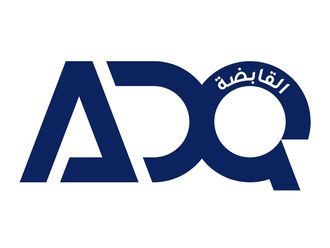LONDON
Traders betting on the Goldilocks scenario of a not-too-hot, not-too-cold global economy came up against market bears again on Tuesday, with little sign yet of a winner emerging in their ongoing face-off.
Stocks see-sawn with solid gains in China and other Asian emerging markets offset by a tumble in Japan and then a red morning for most of Europe’s bourses and Wall Street futures in New York.
Tokyo’s 0.65 per cent fall had been compounded as the yen hit a five-month high amid a renewed bout of dollar weakness which had also helped lift bond and commodity markets after recent turbulence.
Copper, one of the industrial metals seen as a sensitive gauge of global economic health, climbed over 1.3 per cent, while Asia’s overnight gains kept MSCI’s 47-country world stocks index up 0.2 per cent despite Europe’s subdued session.
“As long as we don’t get dragged into (a US) recession the market tends to recover quite quickly,” said Donough Kilmurray, Managing Director, Investment Strategy Group at Goldman Sachs, seeing only a 10 per cent chance of that this year.
Still, caution lingered in the broader markets following a US-led tumble in riskier assets last week and ahead of US inflation data on Wednesday. A stronger-than-expected reading on price pressures could trigger a fresh wave of selling. US markets opened lower on Tuesday, falling almost 180 points in early trading.
There were niggling worries too about the trajectory of debt levels after US President Donald Trump on Monday moved back his own deadline for a balanced budget.
World markets’ main ‘fear gauge’, the VIX volatility index was nudging higher again after two days of easing back.
The currency market remained choppy too.
Britain’s pound was jolted to a session high of $1.3924 after headline annual UK inflation came in at 3.0 per cent, a tenth of a point above forecasts and holding close to its highest level in nearly six years.
The data highlighted the challenge the Bank of England faces as it tries to return price growth to target over the next two years.
The dollar’s index against a basket of six major currencies fell over 0.5 per cent to 89.689 as the bears returned to give it its worst day of the month so far. Last week had been the greenback’s best since 2016.
It was 1 per cent lower against the yen at 107.600 yen, while the euro added 0.4 per cent to $1.2322 and the Swiss franc also made ground.
“It looks like for now markets are reverting back to the weaker dollar theme, but I think that remains dependent on risk appetite recovering,” said TD Securities’ European head of currency strategy Ned Rumpeltin.
“You have this lingering feeling of risk-off in some markets so it is really hard to find a consistent story.” BOND FIGHTS BACK The 10-year Treasury note yield — which moves inverse to its price — fell back to 2.83 per cent in Europe trading after rising to a four-year peak of 2.902 per cent on Monday.
German bonds were also back in demand as recent multi-year highs on yields on both sides of the Atlantic proved attractive for some investors.
Germany’s 10-year yield fell by almost 2 basis points to 0.73 as it retreated further from the 2-1/2 year high of 0.81 per cent hit last week.
“I think what we are seeing is a little bit of a consolidation,” said DZ Bank strategist Christian Lenk. “Given the pace of the move so far, we had to take a break somewhere and we have reached that region now.” Emerging markets cheered the weaker dollar and yields and commodity gains but as usual traffic was not one-way.
South Africa’s rand fell as much as 0.25 per cent to 11.92 per dollar following after the country’s ruling party African National Congress opted to sack President Jacob Zuma but was struggling to actually oust him.
The rand had risen 2 per cent over the past two days, helped by hopes that Zuma would step down, but ran into resistance as the latest news was seen potentially prolonging a political standoff.
Other commodity-sensitive currencies fared better. The Australian dollar was steady at $0.7856 after rising about 0.6 per cent overnight on the back of higher commodity prices and improvement in broader risk sentiment.
Brent crude rose before easing off to $62.44 per barrel ahead of US trading, while gold was 0.3 per cent higher at $1.326.51 an ounce.











